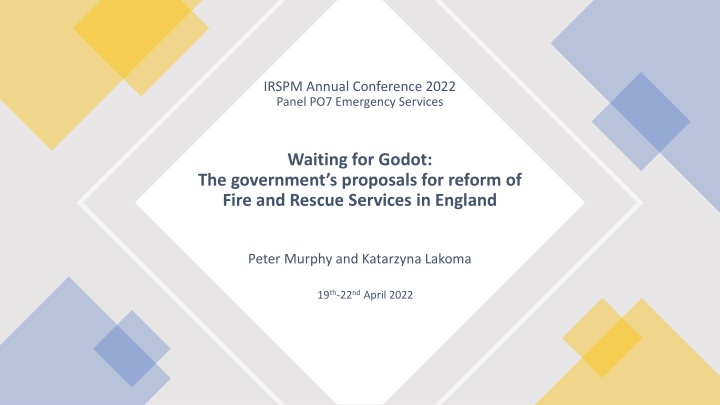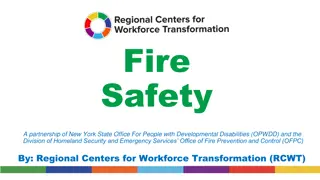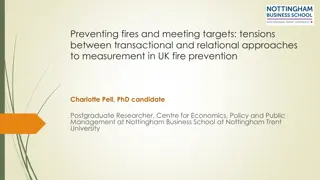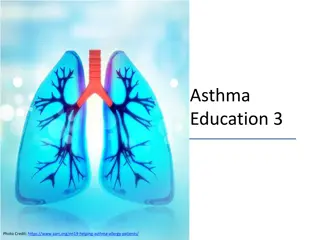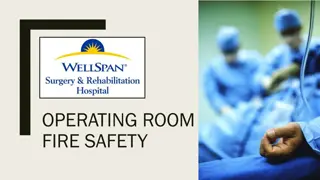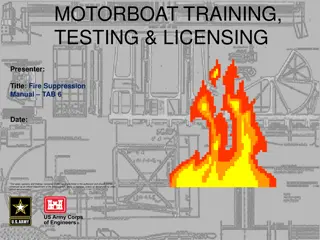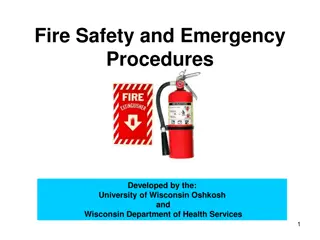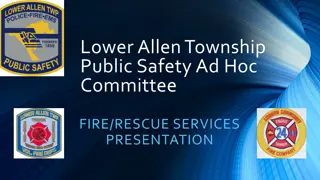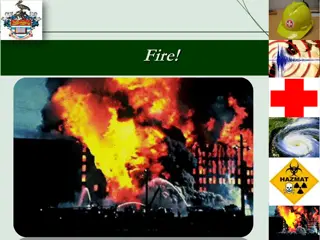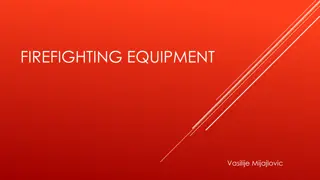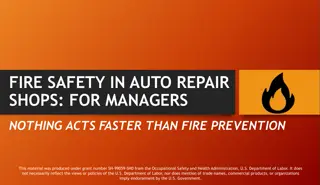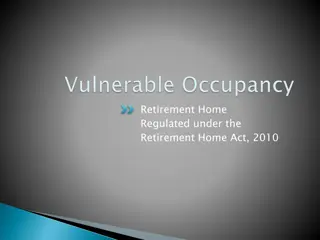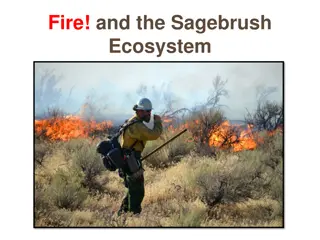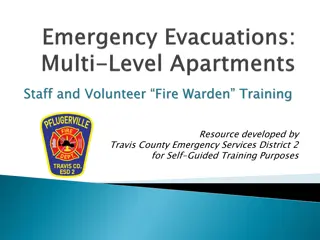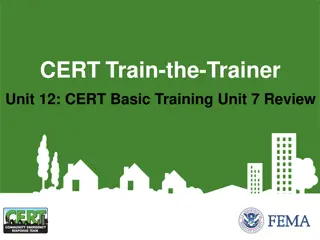Fire and Rescue Services Reform in England
England has undergone austerity measures since 2010, leading to reforms in Fire and Rescue Services. With increasing calls for transparency, accountability, and performance improvements, the government has introduced changes such as Police, Fire, and Crime Commissioners. The impact of major emergencies like the Grenfell Fire and COVID-19 pandemic has intensified the focus on emergency services. Stay updated on the evolving landscape of Fire and Rescue Services in England.
Download Presentation

Please find below an Image/Link to download the presentation.
The content on the website is provided AS IS for your information and personal use only. It may not be sold, licensed, or shared on other websites without obtaining consent from the author.If you encounter any issues during the download, it is possible that the publisher has removed the file from their server.
You are allowed to download the files provided on this website for personal or commercial use, subject to the condition that they are used lawfully. All files are the property of their respective owners.
The content on the website is provided AS IS for your information and personal use only. It may not be sold, licensed, or shared on other websites without obtaining consent from the author.
E N D
Presentation Transcript
IRSPM Annual Conference 2022 Panel PO7 Emergency Services Waiting for Godot: The government s proposals for reform of Fire and Rescue Services in England Peter Murphy and Katarzyna Lakoma 19th-22ndApril 2022
Introduction Prior to pandemic, and since the 2010 general election, England has been subject to the policies of austerity localism with reductions in central government grant since 2010 requiring strong and responsive local leadership, greater accountability and improved performance management. A key part was to introduce greater transparency and accountability via directly elected individuals (originally PCCs and elected Mayors, but subsequently PFCCs for fire services). In addition the 2017 Act also replaced the National Framework for Fire & Rescue Services and re- introduced an external inspection and assessment regime. Coincidentally a series of major incidents and emergencies (including the Grenfell Fire and Manchester Arena Attack) spotlighted the Emergency Services response to major emergencies. The spotlight on the performance, organisational and financial resilience of the emergency services has been intensified by the COVID pandemic.
Police Fire and Crime Commissioners Originally a Labour idea, Police and Crime Commissioners were included in 2010 manifesto s of both Conservatives and Liberal Democrats) and established by the Police Reform and Social Responsibility Act 2011 Public have been unenthusiastic: 1stelection for PCCs in Nov 2012 had a historically low electoral turnout, 2ndelection in May 2016 coincided with local government elections for 40 of 43 territorial police forces (not London or Greater Manchester). 3rd election in 2021 was during the pandemic. However the 2015 Conservative Manifesto included a proposal to extend PCCs control to all fire services (PFCCs) and in 2017 Policing and Crime Act facilitated PCCs taking responsibility for FRS subject to a local case being made. There are 38 PCCs, 4 of which are PFCCs, all in England (Essex, Staffs, Northants and North Yorkshire) while London and Greater Manchester, have mayoral models.
HMICFRS identified 6 national issues from Inspections The Home Office to determine the role of fire and rescue services, to remove any ambiguity The sector should remove unjustifiable variation in performance, (including the definition of risk). The sector should review and reform how effectively pay and conditions are determined. The Home Office should ensure that the sector has sufficient capacity and capability to bring about change The Home Office should invest chief fire officers with operational independence. There should be a code of ethics for the sector
Fire Service Reform Agenda July 2020, gov t announce a two-part review of PCCs and PFCCs, - clear intention of extending and strengthening the commissioner model Government has received Kerslake Report (Manchester Arena Attack), Redmond Report (Local Audit), HMICFRS s 3 State of Fire reports and 3 reports on COVID-19 The Home Secretary announced in March 2021 that further reform will focus on three areas people; professionalism; and governance to be published in the autumn of 2021 1stpart changes implementable before May 2021 (primarily focussed on the Police). 2ndpart a White Paper originally to be published in Spring 2021
Phase 1. Home Secretarys proposals for reform (March 2021) Phase 2 will be about governance, people and professionalism 1st phase found strong support for a directly elected individual taking on fire functions! 2nd Phase Governance and Leadership: Consultations on whether to mandate the transfer of FRS functions to PFCCs across England/Operational independence for Chief Fire Officers/Delineation of strategic and operational planning for F&R and separate budgets in the PFCC model. People Poorest aspects in the Inspection reports; long term issues with EDI, workforce planning, training and development and organisational cultures. Professionalism - Combination of poor communication and poor procedures leading to sub-optimal collaborative working (at Manchester Arena and Grenfell). Inadequate and inconsistent risk information. Professional Standards Board Plus implementation of new external audit and financial reporting arrangements from Redmond? Any omissions?
Ashworth & Farrell (2021) show there is no substantial evidence produced to support any of the governance models in Fire & Rescue What is the evidence for the Eckersley & Murphy (2019) have shown that the local case evidence for PFCCs to-date is effectively a sham with all PFCCs in conservative areas strong support for a directly elected individual taking on fire functions that emerged from the first phase of the internal review? HMICFRS (2020, 2021a, 2021b) evidence from their inspections to date is equivocal on the impact on operational performance Lakoma (2021 and ongoing) 6 case studies on the impact on accountability of a governance change from Fire and Rescue Authorities to PFCCs
Have PFCCs improved accountability in practice? New accountability arrangements are more complex than traditional arrangements. The expanded powers of PFCCs are reflected in more structured and detailed meetings, boards, and panels relating to public accountability, transparency, governance, performance, ethics, and assurance. Mixed views on whether PFCCs improve accountability to local communities. Personal dynamics between CFOs and PFCCs have an important role in developing accountability relationships (where roles and responsibilities are not clear, and communication and trust are not apparent, the possibility of goal divergence and conflict is high). Has led to calls for a clear separation of responsibility between strategic governance by PFCCs and operational decision-making by CFOs.
HMICFRS made repeated calls for fundamental reform of the national terms and conditions negotiating machinery in annual State of Fire reports. HMICFRS include this in the 6 national recommendations (originally in 2019 report) which involve major structural aspects delayed by the pandemic. People and Professionalism While progress in service delivery has been made by local F&RS, the Chief Inspector reports that national reforms have not made equivalent progress (this reflects earlier NAO findings in 2015). Planning, collaboration, communication and procedures (particularly at major civil emergencies) needs improving
The question of short and long-term resources are not addressed by either the Home Secretary s Statement and HMICFRS ducked this issue the sector has sufficient capacity and capability to bring about change , not whether FRSs have the resources to do the job . Omission 1: Funding and Resources Brexit, Climate Change, COVID-19 and Ukraine effectively mean increased macro-economic challenges and no acceptable plan for a fair distribution of central government support to local service deliverers. The emergence of financial sustainability and financial resilience has been acknowledged by HMT, the NAO (in its new Code of Audit Practice), and will inform a new local public audit regime
Improved accountability, resilience, legitimacy, and scrutiny all rely on adequate data and intelligence. Omission 2: While piecemeal improvements have been made, 3 recent reports during the pandemic (NFCC, HMICFRS and the C19 National Foresight Group) highlight the continuing inadequacy of the data and intelligence for national and local decision making. Data and Intelligence reflects a poor evidential environment Policy making and service delivery in FRS is still being undertaken in a relatively poor evidential environment
Internal Scrutiny e.g. through Fire and Rescue Scrutiny Panel and national guidance? Omission 3: The nature and scope of external inspections by HMICFRS corporate inspections? Improvements to Internal and External Scrutiny Revisit the intervention arrangements/protocol. Relationship to Government/Parliament/Home Office Revisit building inspection and enforcement
Predictions rather than conclusions Change or issue yes partial no Role clarifications and operational Independence for CFO. Joined up working and inter-agency collaboration Revisiting Building Regulations and Enforcement Improved Data, Information, and Standards Restructuring of Financial support New local public audit Corporate or Governance Inspection added to inspection regime National negotiating machinery reform Mandatory PFCCs and Boundary Changes
Waiting for Godot Will a Fire Reform White Paper actually emerge? Watch this space! Questions?
